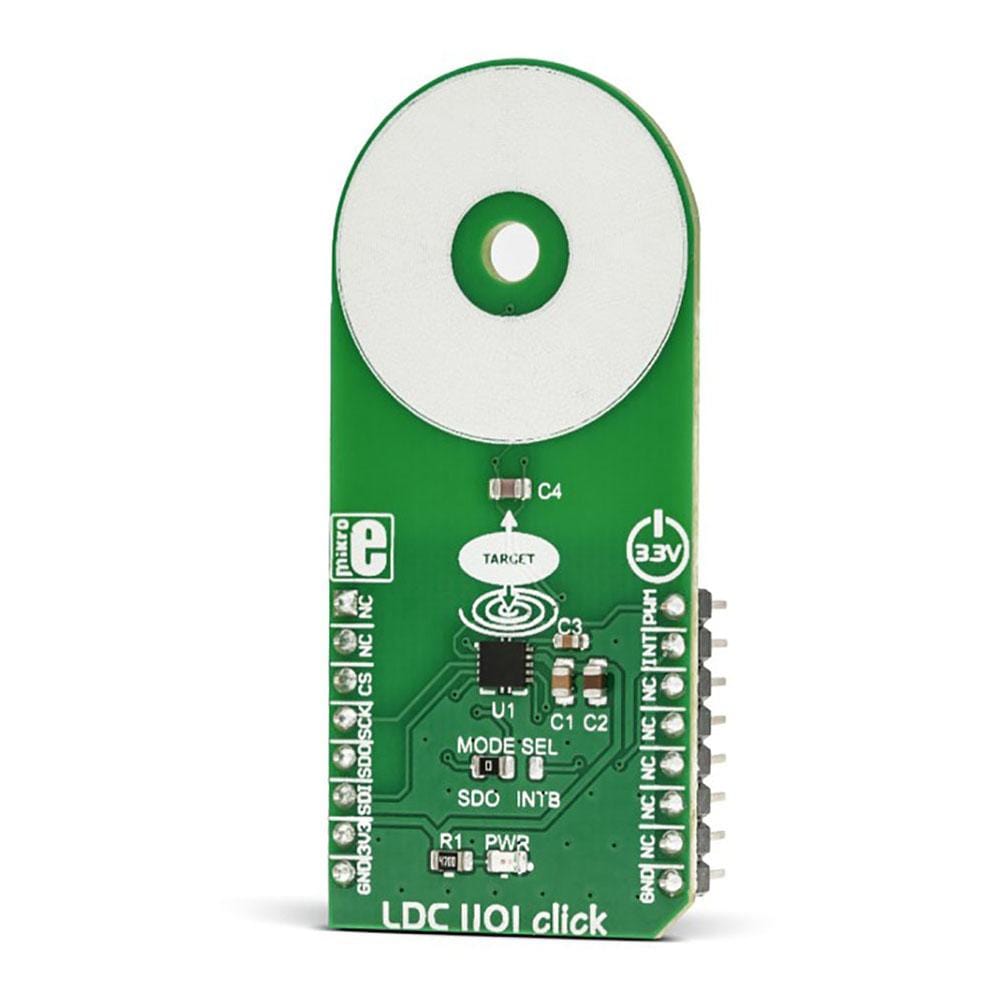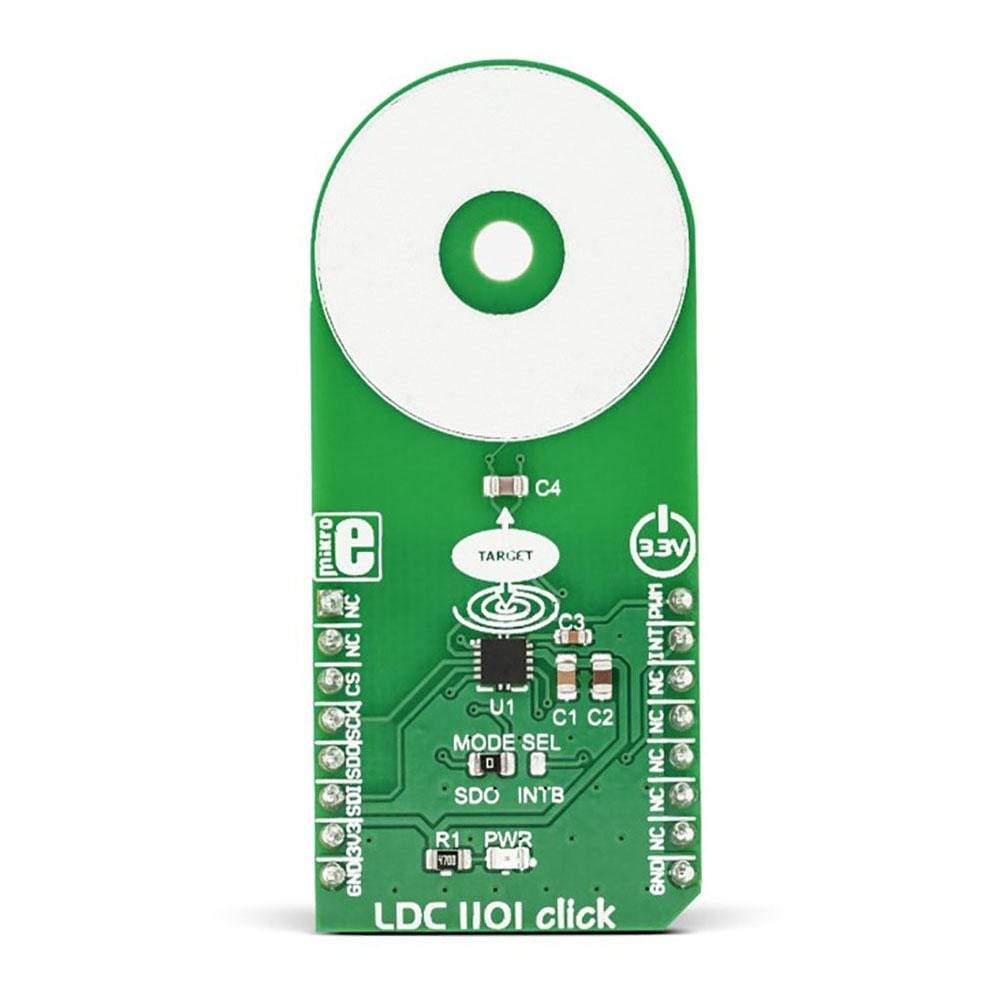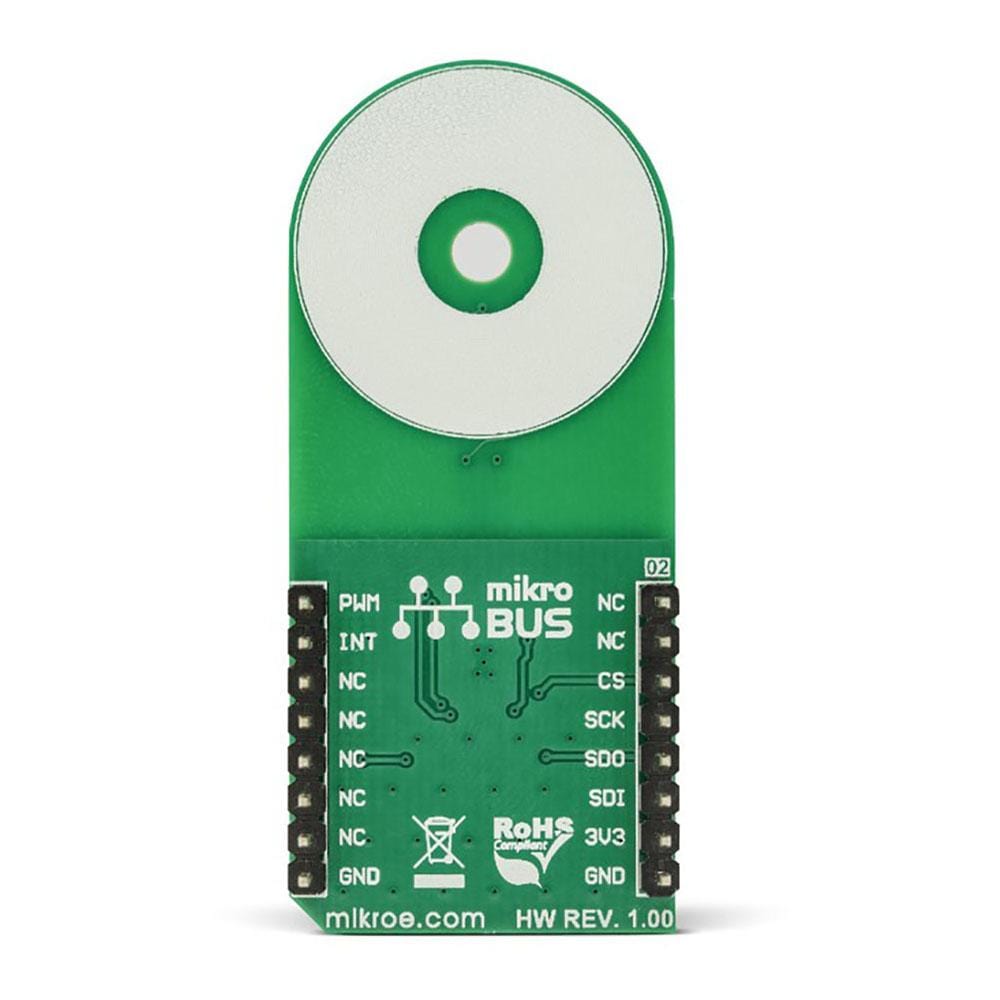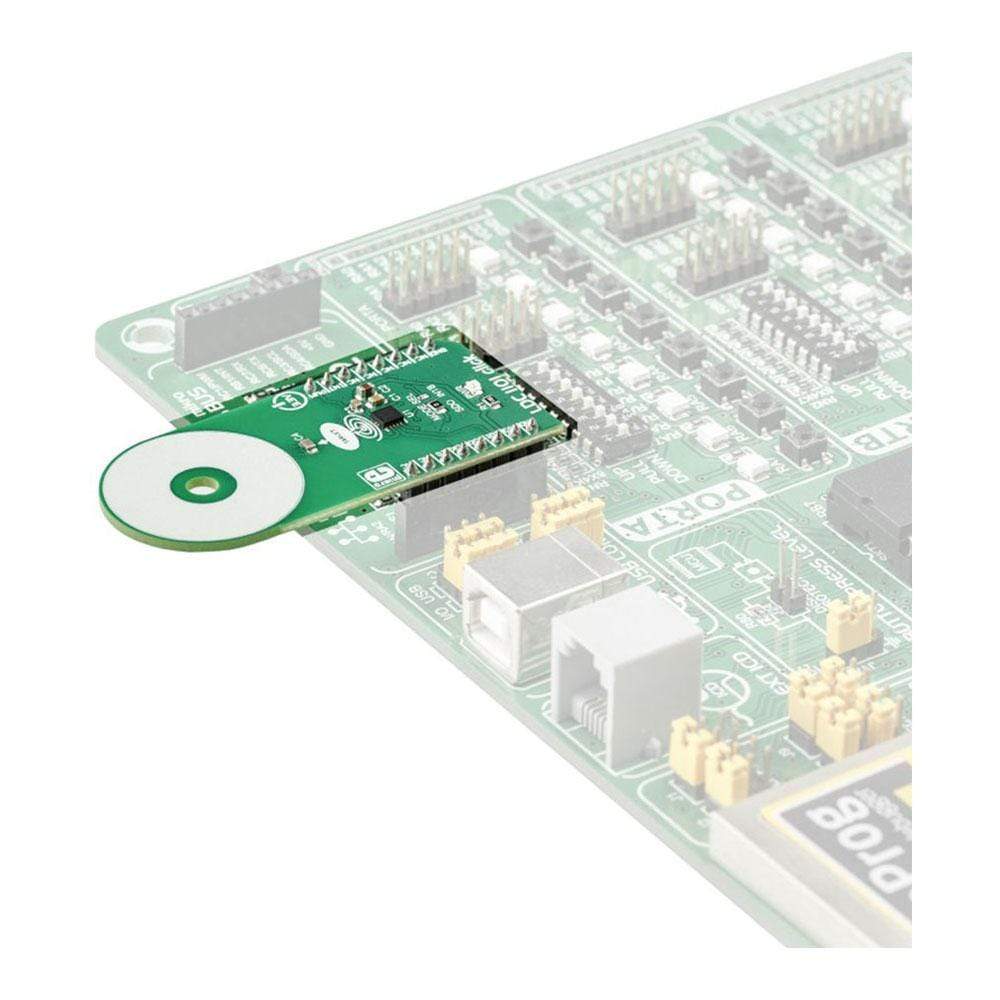



Key Features
Overview
The LDC1101 Click Board™ is an inductance-to-digital converter It is designed for a range of different applications, based on inductive measurements. You can use it to detect the position, rotation, or motion of an object. LDC1101 carries the LDC1101, the integrated, high-resolution, high-speed, inductance-to-digital converter. The converter allows both the inductance and the impedance to be measured. The fast impedance + inductance (RP+L) mode offers separate 16-bit readings for both parameters, while the high-resolution inductance (LHR) mode offers a single reading with a resolution of 24 bits.
It comes in a package that also includes the mikroSDK software and a library with all the functions. The LDC1101 Click Board™ comes as a fully tested and approved prototype, making it a reliable device ready to use on the development board.
Downloads
Le LDC1101 Click Board™ est un convertisseur inductance-numérique. Il est conçu pour une gamme d'applications différentes, basées sur des mesures inductives. Vous pouvez l'utiliser pour détecter la position, la rotation ou le mouvement d'un objet. Le LDC1101 est équipé du LDC1101, le convertisseur inductance-numérique intégré, haute résolution et haute vitesse. Le convertisseur permet de mesurer à la fois l'inductance et l'impédance. Le mode impédance + inductance rapide (RP+L) offre des lectures séparées de 16 bits pour les deux paramètres, tandis que le mode inductance haute résolution (LHR) offre une lecture unique avec une résolution de 24 bits.
Il est livré dans un package qui comprend également le logiciel mikroSDK et une bibliothèque avec toutes les fonctions. Le LDC1101 Click Board™ est livré sous la forme d'un prototype entièrement testé et approuvé, ce qui en fait un appareil fiable prêt à être utilisé sur la carte de développement.
| General Information | |
|---|---|
Part Number (SKU) |
MIKROE-3240
|
Manufacturer |
|
| Physical and Mechanical | |
Weight |
0.019 kg
|
| Other | |
Country of Origin |
|
HS Code Customs Tariff code
|
|
EAN |
8606018713882
|
Warranty |
|
Frequently Asked Questions
Have a Question?
Be the first to ask a question about this.




